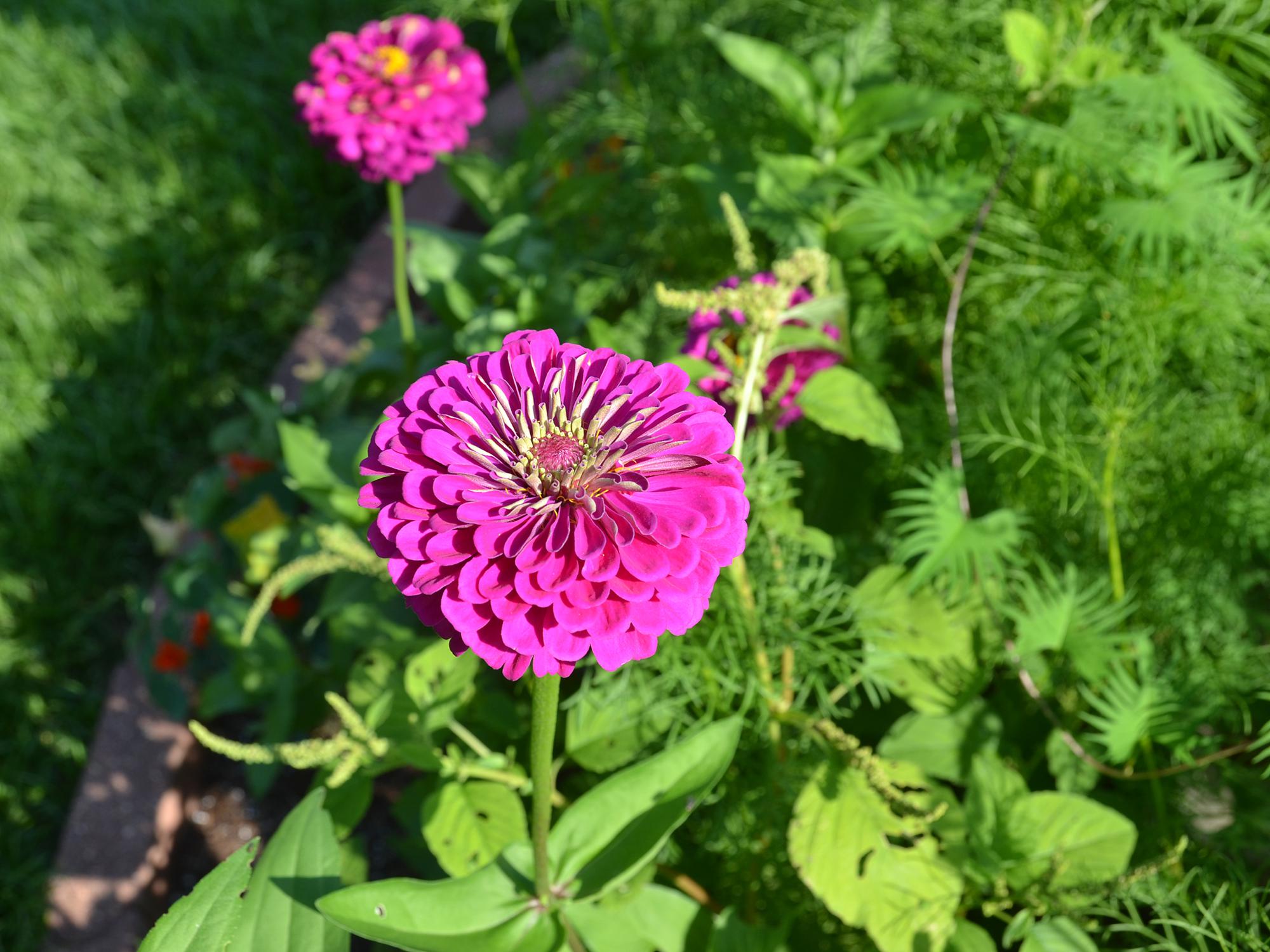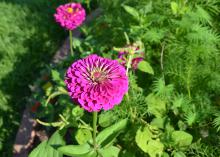Information Possibly Outdated
The information presented on this page was originally released on June 24, 2016. It may not be outdated, but please search our site for more current information. If you plan to quote or reference this information in a publication, please check with the Extension specialist or author before proceeding.
Jackson 4-H club supports monarchs with waystations
JACKSON, Miss. -- Mississippians are stepping in to support dwindling Eastern monarch butterfly populations with a nationwide program aimed at reestablishing their diminishing North American habitat.
Students at Wingfield High School in Hinds County planted milkweed and other nectar plants at two sites in south Jackson through the Monarch Waystation Program. The 11-year-old waystation program provides seed kits to create butterfly gardens and certification for existing gardens that meet the program’s qualifications. The program is implemented through Monarch Watch, a nonprofit educational outreach effort to conserve monarch populations.
“We wanted to help monarchs while teaching our young people how to care for their environment and give back to their community,” said Jeff Gibson, who leads the school’s George Washington Carver Future Scientists 4-H Club and the Agriculture Academy. “Planting these gardens helps the butterflies and our students. Milkweed provides a place for monarchs to reproduce and the nectar plants provide an energy source for adults. Our students learn to care for things that can’t directly benefit them.”
The Mississippi State University Extension Service 4-H program teaches skills that help young people serve and lead their communities.
Gibson, who created and directs Wingfield’s Agriculture Academy at the inner-city school, partnered with MSU Extension, the Mississippi Agricultural and Forestry Experiment Station, the Alcorn State Extension Program, the U.S. Department of Agriculture Forest Service and Foot Print Farms in 2013 to establish the academy. Experiment Station researcher Bill Evans, Foot Print Farms owner Cindy Ayers-Elliott, Alcorn Extension agriculture educator Ralph Arrington and USDA Forest Service public affairs officer Kara Davis have been key players in helping participants learn how to grow food, drive a tractor and repair equipment.
Planted in 2014, the Wingfield Monarch Garden is one of approximately 30 Mississippi butterfly gardens certified by Monarch Watch. It is located at the Educational Learning Center. Students also installed a second waystation at a local park in south Jackson.
Numbers of the iconic orange-and-black Eastern monarch dropped more than 80 percent in the last 10 year, as summer habitats in North America and Canada have been lost to urban expansion and changing gardening practices. The Eastern monarch’s only overwintering habitat in Mexico’s Transvolcanic Mountains also is declining. Without conservation efforts, experts believe populations of Eastern monarchs, which breed east of the Rocky Mountains, could fall so low by 2036 that the species likely will not recover.
Although waystations target monarch butterflies, other pollinator species can benefit from these sites, which are often planted in home gardens, on roadsides, and at schools, zoos, parks, nature centers and businesses.
“Plants commonly included in waystations also attract native bees, hummingbirds and other butterfly species,” said Gary Bachman, Extension horticulture specialist and host of Southern Gardening. “Native milkweeds are low maintenance, deer resistant and the primary food source for monarch caterpillars. But they also attract other pollinators.”
Native milkweeds that do well in Mississippi gardens include butterfly weed (Asclepias tuberosa) and swamp milkweed (Asclepias incarnata). Flowering plants, such as coneflowers, zinnias, salvias and sunflowers, are good choices to provide nectar for energy for all pollinators, including adult monarchs, Bachman said.
For more information about the Monarch Waystation Program, visit http://www.monarchwatch.org. To learn about attracting a variety of butterflies to the garden, refer to Extension Information Sheet 1661, “Butterfly Plants and Mississippi Gardens,” at http://www.extension.msstate.edu.








